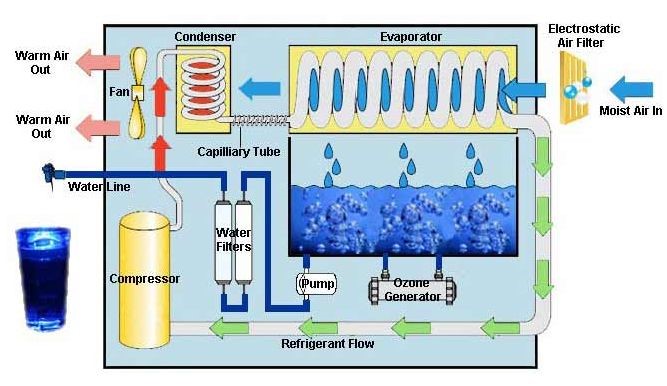The Global Clean Drinking Water Crisis
From Air to Refreshing Water: Innovative Solutions for Clean Drinking Water
Smart Village Movement, July 15, 2024
Access to clean drinking water remains one of the most pressing global challenges. The World Health Organization states that over 2 billion people lack access to safely managed drinking water services. This issue is particularly acute in rural areas, where infrastructure and resources are often limited. The scarcity of potable water not only affects health but also hampers economic development, education, and overall quality of life.
Rural Areas and the Impact of Climate Change
Rural areas, home to a significant portion of the global population, often struggle the most with water scarcity. The lack of infrastructure to deliver clean water, pollution, and depletion of natural water sources exacerbate the issue. Climate change further intensifies this problem, with changes in precipitation patterns, prolonged droughts, and extreme weather events disrupting traditional water sources, making reliable access to clean water increasingly difficult.
The Paradox of Water Scarcity in Meghalaya
Meghalaya, a state in India known for its abundant rainfall, presents a paradox. Despite receiving one of the highest amounts of rainfall in the world, many regions in Meghalaya still struggle with potable water scarcity. The reasons are multifaceted:
- Inadequate water storage infrastructure
- Contamination of water sources
- The challenge of distributing water evenly across hilly terrains
Air-to-Water Technology: A Promising Solution
In the face of these challenges, air-to-water technology emerges as a viable solution. Atmospheric Water Generators (AWGs) extract water from humid ambient air. This technology leverages the natural presence of water vapor in the air, condensing it by cooling the air below its dew point. Unlike dehumidifiers, AWGs are specifically designed to render the extracted water potable, making them highly effective in regions where clean drinking water is hard to come by.

Air to Water Harvesting Process
How Atmospheric Water Generators Work
Atmospheric Water Generators operate on a simple yet effective principle:
- Air Intake: The AWG draws humid air from the environment.
- Cooling: The air is cooled below its dew point, causing water vapor to condense into liquid water.
- Filtration and Purification: The condensed water undergoes filtration and purification processes to remove impurities and ensure it is safe for drinking.
- Collection and Storage: The purified water is collected and stored for use.
Benefits of Atmospheric Water Generators
- No Water Source Needed: AWGs require only electricity, making them ideal for areas without access to natural water sources.
- Water from Air: They harness the presence of water vapor in the air, providing a consistent water supply.
- Chemical-Free: The water is free from harmful chemicals such as chlorine, often found in other water sources.
- Renewable Energy Compatible: AWGs can be powered by solar energy and generators, promoting sustainability.
- Pristine Water Quality: Advanced filtration ensures that the water is of high quality and safe for consumption.
SVM’s Mission: Bringing Technology to Villages
The Smart Village Movement (SVM) is committed to addressing the drinking water challenges faced by rural communities. By introducing air-to-water harvesting technology, we aim to provide a sustainable and reliable source of clean drinking water. This initiative not only addresses immediate water scarcity but also promotes long-term resilience against the impacts of climate change.
We are excited to explore and soon launch this innovative solution, directly addressing United Nations Sustainable Development Goal 6 (Clean Water and Sanitation).
In conclusion, air-to-water technology offers a promising solution to the global clean drinking water challenge. By harnessing atmospheric water, we can provide safe and sustainable water sources to communities in need, transforming lives and fostering development. The Smart Village Movement is dedicated to bringing this innovative technology closer to villages, ensuring that no one struggles to access clean drinking water.
For more information and updates on our initiatives, please visit Smart Village Movement or contact us at contact@smartvillagemovement.org.
